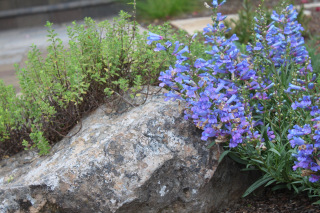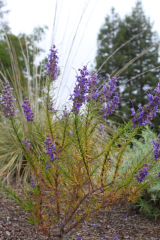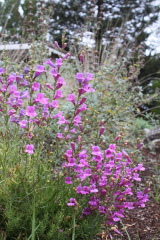Showcase Feature
This large corner lot, once a humdrum hedge and large, water-consuming lawn, is now a dynamic garden that changes with the seasons, following the rhythms of the natural world. In December and January the delicate, urn-shaped creamy pink flowers of the manzanita appear, attracting hummingbirds and butterflies. The blue blossoms of the California lilac burst forth in spring, delighting native bees. In summer, the scents of three types of sage (black, creeping, and hummingbird) and the fragrant, spicy aroma of the burgundy flowers on the spicebush waft on the breeze. In summer and fall, the garden is brightened by the appearance of the bright red flowers of the native fuchsia. Showy perennial deergrass anchors the garden. The garden was designed by the team at Susan Friedman Landscape Architecture.Other Garden Attractions
• The East Bay Municipal Utility District provided nearly $2,000 in rebates to remove the lawn and replace it with a water-conserving garden.• Wood chips help to conserve water and keep weeds at bay.
• The downspouts from the house drain into the cobble-filled creek bed; the water flowing through the creek bed drains naturally into the soil, replenishing the water table, lessening the erosive impact on the local creek, and keeping the garden green longer.
Gardening for Wildlife
Quail stroll through the garden, looking for seeds, leaves, and insects. Hummingbirds are attracted to the tubular flowers of the penstemon, monkeyflower, and the hummingbird sage. Butterflies sip nectar from the seaside daisy and the buckwheat. Lizards bask on the boulders.Photos
Click to see as a slideshow:






